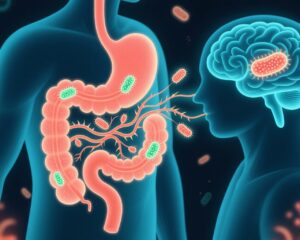Introduction
Sleep is a fundamental biological necessity that balances our wakefulness and unconsciousness, a boundary we cannot permanently escape. Beyond the simple rhythms of sleep and wakefulness lies a deep relationship with aerobic respiration — the process by which cells generate energy. While many see sleep and aerobic metabolism as independent pillars of life, cutting-edge research from Oxford University’s Centre for Neural Circuits and Behaviour (CNCB), led by Gero Miesenböck, reveals aerobic metabolism as the fundamental driver necessitating sleep.
Meet the Pioneer: Gero Miesenböck and Optogenetics
Gero Miesenböck is recognized globally in neuroscience circles, particularly for pioneering developments in optogenetics more than two decades ago. His team introduced light-sensitive opsin genes into rat neurons, allowing them to be electrically stimulated by light. Later, this approach was applied to fruit flies, manipulating specific brain neurons to control flight patterns with pinpoint accuracy. These breakthroughs transformed neuroscience by allowing unprecedented control and observation of brain activity.
This foundational work has broadened our understanding across multiple brain functions — sensing, movement, motivation, learning, communication, and decision-making. Since 2012, Miesenböck has amassed numerous awards, placing optogenetics as a frontrunner for the Nobel Prize. Parallel to his optogenetic studies, he and his collaborators have embarked on profound explorations into the biology of sleep using fruit flies as model organisms.
The Biological Clock and Sleep Drive: A Dual System
Human sleep is regulated by two primary physiological processes: the biological clock (circadian rhythms) and the sleep homeostasis system.
The circadian clock is governed by the suprachiasmatic nucleus (SCN) of the hypothalamus, synchronizing our sleep-wake cycles with environmental light cues received via the retina. This master clock further aligns peripheral clocks throughout the body, orchestrating metabolism, immune responses, and sleep timing.
The sleep homeostasis system controls sleep pressure — how strongly the body demands sleep. When deprived of rest, this system builds pressure, resulting in a compensatory rebound of longer, deeper sleep once conditions permit. In fruit flies, the dorsal fan-shaped body (dFB) acts as the key brain region controlling this process, with a similar role postulated for the ventrolateral preoptic area (VLPO) in mammals.
Interestingly, despite obvious environmental differences between species — humans require a secure, quiet environment for seven to eight hours of sleep, whereas fruit flies merely pause quietly — the underlying sleep-regulatory mechanisms show high evolutionary conservation.
The dFB: Guardian of Sleep
Scientific observations reveal that when neurons in the fruit fly dFB become active, sleep onset follows. During the day, the dFB neurons remain suppressed amid intense neural activity elsewhere, processing external stimuli and consuming energy. This is likened to a nighttime worker inactive during the day but active at shift start; as night falls, dFB neurons ‘clock in’ to initiate sleep.
A Precise Biochemical Chain Reaction: Sleep’s Molecular Countdown
The dFB triggers sleep through a chain of metabolic and molecular events. During wakefulness, fruit flies consume food rich in energy substrates metabolized mainly through mitochondrial oxidative phosphorylation — the electron transport chain involving four complexes that ultimately synthesize ATP, the cell’s energy currency.
However, because dFB neurons remain inactive during the day, they consume less ATP, causing ATP molecules to accumulate. This accumulation stalls the electron transport chain like traffic congestion on a highway, particularly at complex III, where electron leakage produces superoxide (5B52O25B52 64;), a reactive oxygen species (ROS). This superoxide accumulation constitutes the “sleep countdown.”
This oxidative pressure propagates within dFB neurons until it activates a specific voltage-gated potassium ion channel on the cell membrane. A ROS-driven enzyme normally bound to NADPH undergoes oxidation, changing its conformation and opening the potassium channels. Neuronal excitability increases, sending signals across the brain to induce sleep.
The Danger of Sleep Deprivation: Whole-Brain Oxidative Damage
What happens when the brain resists this natural push to sleep? Recent studies from Miesenböck’s team, published in 2025, illuminate the damaging effects of sleep deprivation or ‘all-nighters’.
Their research on roughly 3000 fruit fly neurons after 12 hours of sleep deprivation (equivalent to an all-nighter) showed massive changes in neuronal membrane glycerophospholipids. Of 380 types identified, 51 exhibited dramatic increases or decreases, indicating oxidative damage.
Under normal conditions, glycerophospholipids possess long-chain, polyunsaturated fatty acids crucial for membrane flexibility and robustness against oxidation. Sleep loss causes shortened, less unsaturated chains, reducing membrane stiffness and antioxidant defense capability — essentially a state of whole-brain oxidation.
The byproducts include lipid hydroperoxides (LOOH) which degrade into harmful aldehydes and ketones, notably 4-oxo-2-nonenal (4-ONE). This molecule oxidizes NADPH on potassium channels, further excitable dFB neurons and reinforcing the sleep drive.
Mitochondrial Fragmentation and Decline
Beyond lipid oxidation, sleep deprivation triggers mitochondrial fragmentation and a severe reduction in their numbers within dFB neurons. This was documented in detailed imaging studies revealing smaller and fewer mitochondria after sleep loss.
Normally, mitochondria form dynamic networks undergoing fusion and fission to maintain function and health. Sleep deprivation forces excessive fission to isolate and remove damaged mitochondrial segments, but simultaneously depletes phosphatidic acid — essential for fusion. This imbalance hampers mitochondrial renewal and energy production.
Fortunately, neurons recruit lipids from the endoplasmic reticulum to patch mitochondrial membranes, maintaining some mitochondrial functionality, but the overall mitochondrial quantity remains diminished.
The Vicious Cycle of Wakefulness and Oxidative Stress
As wakefulness continues with damaged mitochondria, impaired ATP production intensifies respiratory chain blockage, promoting further ROS formation and escalating oxidative stress. This vicious cycle accelerates neuronal damage and the deterioration of brain function.
The Vital Role of Sleep in Repair and Energy Restoration
Our bodies continuously produce ROS from aerobic metabolism, inflicting gradual harm on neurons and pushing them into a stressed “battle-damaged” state. Sleep offers a vital period of repair — metabolic rates and brain glucose consumption drop, and antioxidant systems ramp up.
Sleep enhances production of melatonin and antioxidant enzymes such as superoxide dismutase, catalase, and glutathione peroxidase, which scavenge free radicals and improve mitochondrial health. This balance enables recovery of cellular integrity and cognitive functions.
Evolutionary Insights: The Origin of Sleep and Aerobic Metabolism
Research ties the emergence of sleep closely to the evolutionary advent of aerobic respiration. Around 2.4 billion years ago, the Great Oxygenation Event enabled eukaryotes to maximize energy extraction from organic molecules. Later, oxygen surges between 750 to 570 million years ago facilitated the Cambrian explosion of complex life.
High-energy oxidative metabolism supported the development of complex, energy-demanding nervous systems — which, in turn, necessitated sleep for damage repair and system maintenance.
Practical Implications and Health Advice
Regular, adequate sleep is essential not only for mental well-being but for sustaining the cellular health of the brain’s energy factories — mitochondria. Avoiding chronic sleep deprivation or nighttime all-nighters prevents cumulative oxidative brain damage and mitochondrial dysfunction.
If occasional sleep loss occurs, compensatory rest can partially restore mitochondrial populations and lipid integrity, but chronic neglect will result in declining cognition and increased susceptibility to neurodegeneration.
Case Illustration
Consider John, a 28-year-old software engineer who frequently pulls all-nighters to meet project deadlines. Initially, John feels productive but soon experiences mental fog, reduced attention, and fatigue. Unknown to him, his brain undergoes oxidative lipid damage, and his mitochondria fragment and decline in crucial sleep-regulating brain regions. Without adequate recovery sleep, John risks chronic cognitive impairment and poor health.
Conclusion
Sleep is not a mere passive state but an active and essential process to counteract oxidative stress generated by aerobic metabolism in the brain. The work of Gero Miesenböck and colleagues reveals how sleep deprivation leads to whole-brain oxidative damage, mitochondrial fragmentation, lipid membrane degradation, and impaired neuronal function.
Maintaining healthy sleep patterns protects brain health at a cellular level, preserving energy metabolism and cognitive function. Future research may uncover therapeutic targets to mitigate oxidative damage and sustain mitochondrial health, but currently, the best prescription remains: prioritize sleep.
Hopefully, this article has increased your appreciation of sleep’s integral role, and tonight, you will rest well.
References
- Frontiers in Aging, 2025
- Oxford University – Gero MiesenbF6ck Team
- Medium – Optogenetics at Oxford
- Nature, 2025 – Study on Sleep and Brain Oxidation
- Nature, 2019 – dFB and sleep regulation
- Nature, 2025 – Mitochondrial dynamics and sleep
- Science, 2008 – Mitochondrial fusion and fission
- PMC – Sleep and brain metabolism review
- Nature Lab Animal, 2011 – Sleep neuroscience



